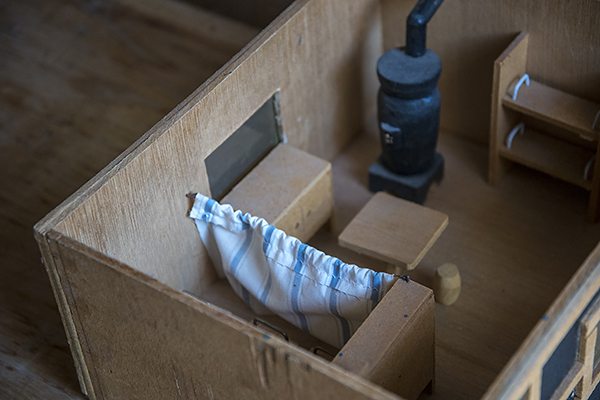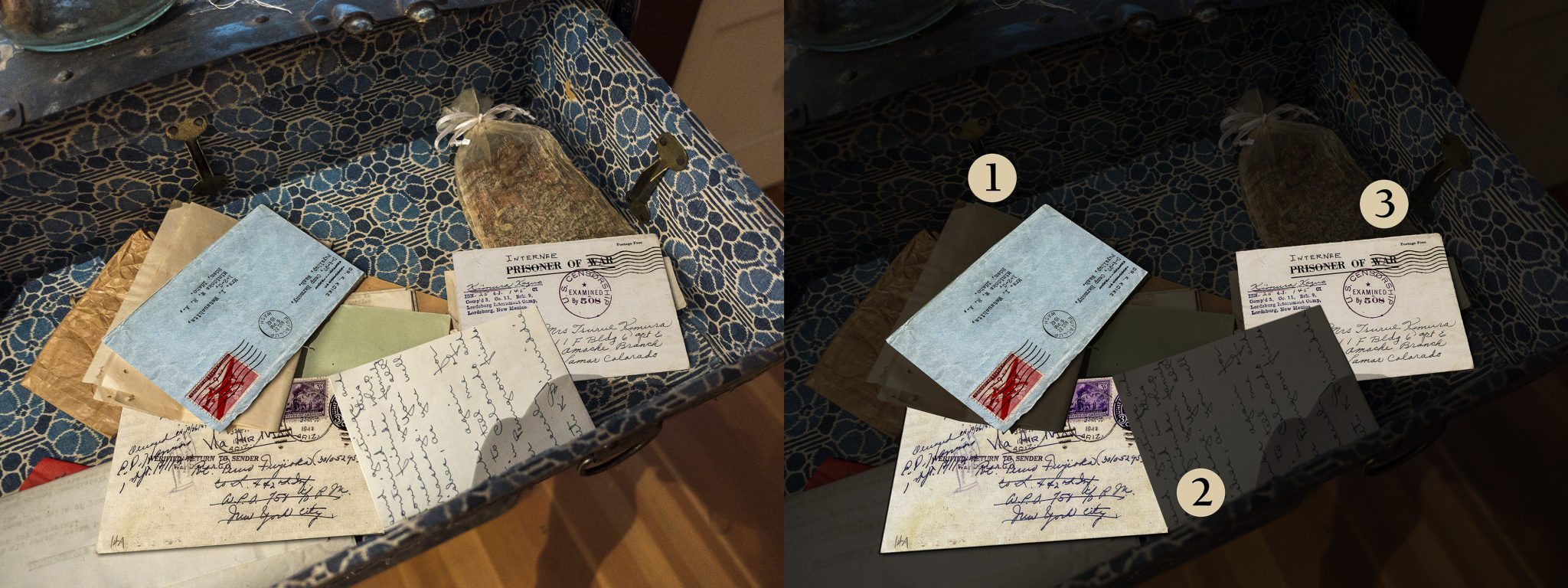How Do We Remember the Past?
by Chizu Omori

What will take us to events that are half forgotten and rapidly retreating into the mists? What will help us to relate to events that happened 75 years ago, namely, the incarceration of 120,000 American Japanese, the majority American citizens, in concentration camps deliberately placed in desolate, interior parts of the country? During World War II, the U.S. government chose to round these people up on the grounds of military necessity, holding most of them for the duration of the war. It was a racist act on the part of President Franklin Roosevelt and other politicians like then-Attorney General of California, Earl Warren, that inflicted great hardship on people, violated the Constitution and the laws of our country, set a dangerous precedent for future presidents, and still remains on the books.

The life as lived in these camps is well documented in archives, history books and memoirs, so we can learn the facts, but what about the people? How did they cope? What was life really like in these tar paper barracks, families crammed into small rooms and living a regimented existence of eating in mess halls, using communal latrines and washrooms, trying to create a semblance of normality under the scrutiny of armed soldiers and an often hostile administration?

Our project is one way to find a path into this experience, a collection of objects and artifacts, relating to particular individuals and their unique stories. Each is a way to “touch” the experience, a bridge back to the past, a fragment of a large, tragic event. The evocative qualities of objects and their stories help us to connect to the past and, for a moment, get a glimpse into an experience that actually happened in our country. They are eyewitnesses to history.
In 2017, we marked the 75th anniversary of President Franklin Delano Roosevelt’s order, E.O. 9066, that created the policy and set it into motion. This year, 2018, we commemorate the 30th anniversary of the passage of the 1988 Civil Liberties Act which called for a government apology and monetary redress of $20,000 for each survivor of the incarceration. That these two years marking different historical points come in succession is cause for reflection … but they aren’t bookends because the story is not over. In fact, this history is more relevant than ever.

Reference Resources
It is not a goal of 50 Objects/Stories to provide an historical summary of the events incited by Executive Order 9066. There are many valuable sources of information available on the internet. Some include excellent overviews. A few links are listed below.
Densho – This is the mother lode for information about the American Japanese experience, conscientiously vetted, well organized and digitized in depth. It is the gold standard. https://www.densho.org
Densho offers a multi-section “core story”. https://www.densho.org/core-story/
Japanese American National Museum – The pre-eminent museum devoted to American Japanese history. http://www.janm.org
Discover Nikkei – An informal treasure trove of stories available in English, Japanese and Portuguese. This is a special project of the Japanese American National Museum.
http://www.discovernikkei.org/en/
Calisphere University of California JARDA – An online exhibition of images of Japanese Americans before, during, and after incarceration. Includes an overview and a glossary. https://calisphere.org/exhibitions/64/jarda-people/
The Washington Post online “Incarceration by Executive Order” – An imaginative, graphically appealing piece on the incarceration including the origins and aftermath of the central story. Includes maps, charts, videos and a diagram of the layout of each camp.
https://www.washingtonpost.com/graphics/national/incarceration-executive-order/

